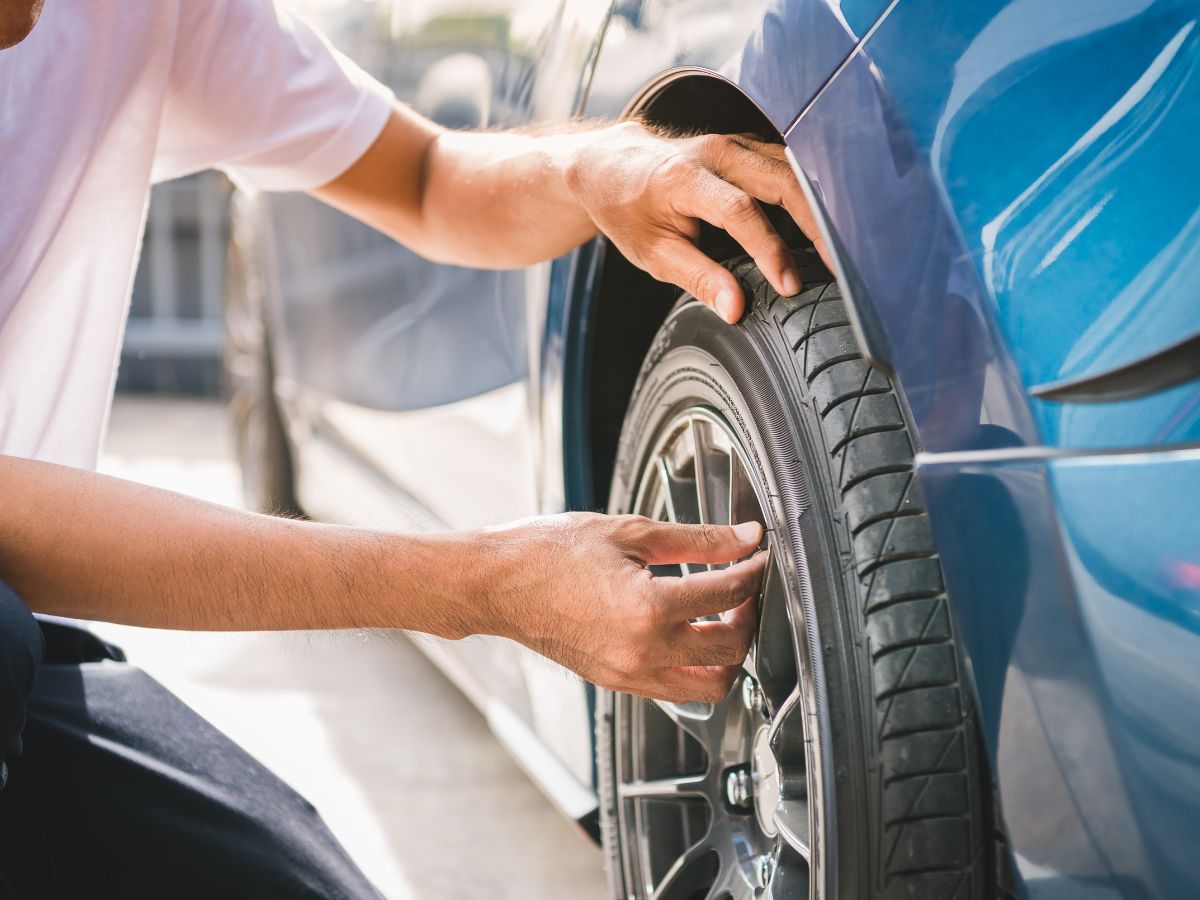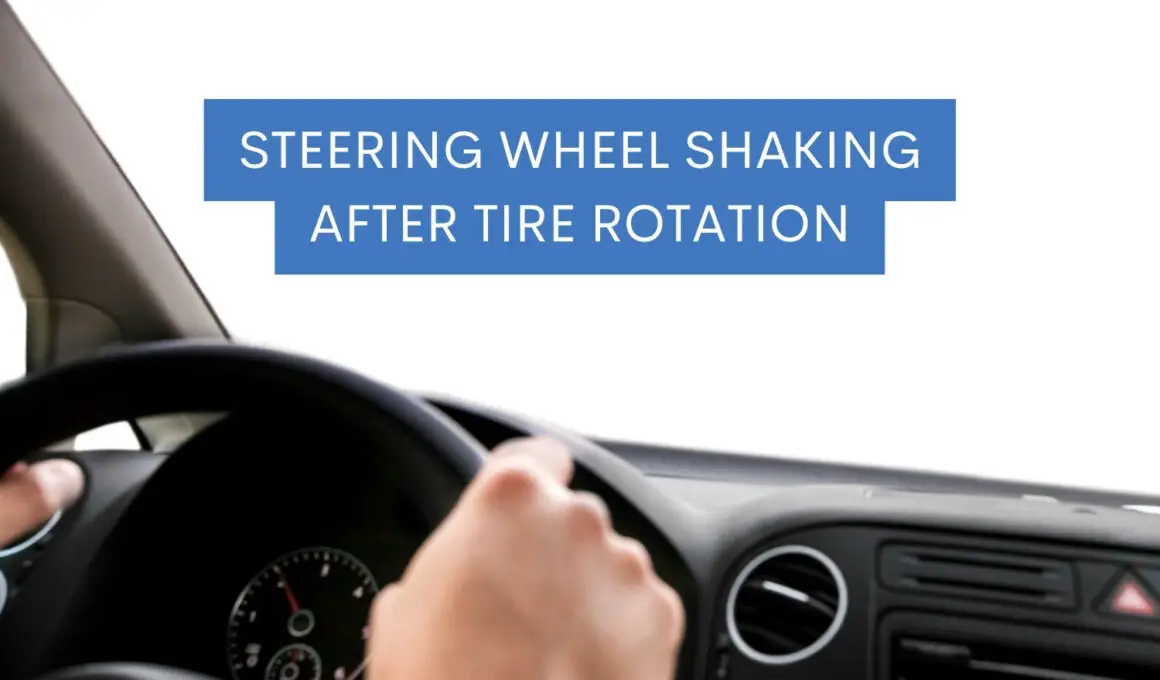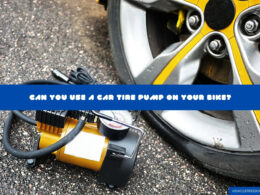In This Article Show
A shaking steering wheel is a common problem that car owners often encounter after a routine tire rotation. This can be quite unsettling, especially if you’ve just had your tires rotated in hopes of improving your vehicle’s performance.
Understanding why your steering wheel shakes after a tire rotation can be a bit complex, but not to worry; with years of practical, hands-on experience, I can break down these technical concepts into straightforward, easy-to-understand language.
As we’ve done several times with other guides on VehicleFreedom, like the rear tires wobbling when driving issues and how bad wheel bearing can affect acceleration, today, we’ll delve into the main causes behind this problematic issue and provide you with practical fixes you can apply.
Understanding the Basics
Before we dive into the causes and solutions for a shaking steering wheel after tire rotation, it’s essential to understand the basics of what tire rotation involves and why it’s an important part of routine vehicle maintenance.

What is Tire Rotation?
Tire rotation is a routine maintenance task where your vehicle’s tires are moved from one position to another. This typically involves swapping the front tires with the back ones and occasionally moving them from one side to another.
The primary aim of tire rotation is to ensure that all the tires wear evenly, which can extend their lifespan and improve your vehicle’s performance.
As a mechanic with over a decade and a half of experience, I’ve performed countless tire rotations and have seen firsthand how this simple maintenance task can greatly impact a vehicle’s performance.
Why is Tire Rotation Important for Vehicle Maintenance?
Regular tire rotations can offer several benefits:
- Even Tire Wear: Tires don’t all wear at the same rate. Front tires, for example, often wear faster than the rear ones because they bear more of the vehicle’s weight and take on the brunt of cornering forces. By regularly rotating your tires, you can ensure that they wear evenly, thereby maximizing their lifespan.
- Improved Performance: Evenly worn tires can help maintain optimal balance and alignment, which can improve your vehicle’s handling and performance.
- Cost Savings: By extending the life of your tires, regular rotations can delay the need for expensive tire replacements.
Common Causes of Steering Wheel Shaking After Tire Rotation
Despite your best maintenance efforts, you might notice a shaking steering wheel after a tire rotation. This can be disconcerting, but it’s a reasonably common issue. Here are some of the most common causes:

1. Unbalanced Tires
Unbalanced tires are among the most common reasons for a shaking steering wheel. When your tires are out of balance, the tire’s weight is not evenly distributed around the tire-wheel unit. This imbalance can cause the wheel to wobble or shake, which can be felt in the steering wheel, especially at high speeds.
2. Wheel Misalignment
If your wheels aren’t properly aligned, they can cause your steering wheel to shake. Misalignment might occur if the vehicle has recently hit a pothole or a curb, or if the tires were not properly aligned during the tire rotation process.
3. Damaged Tires
Sometimes, the problem lies with the tires themselves. If your tires are damaged, worn unevenly, or have a flat spot, they can cause your steering wheel to shake. This can often occur after a tire rotation when a previously rear tire (which doesn’t influence steering as much) is moved to the front.
4. Improperly Torqued Lug Nuts
Lug nuts that are too tight or too loose can cause shaking issues. If they’re not torqued to the vehicle manufacturer’s specification during the tire rotation, this might be the source of the problem.
5. Damaged Suspension Components
Although less common, damaged or worn suspension components can also cause the steering wheel to shake after a tire rotation. If components like the tie rods, wheel bearings, or other suspension parts are damaged, they can manifest as a shaking steering wheel.

How to Diagnose Steering Wheel Shaking After Tire Rotation
Once you notice your steering wheel shaking after a tire rotation, the next step is to try to identify the root cause. It’s often a process of elimination, and sometimes, it requires the help of a professional. Here are some ways to diagnose the issue:
1. Observing Driving Conditions
Firstly, take note of when the shaking occurs. Is it constant, or does it happen only when you’re driving at certain speeds? Does it get worse when you brake? The answers to these questions can provide valuable clues.
For example, shaking that only happens at high speeds often indicates unbalanced tires, while shaking that worsens when braking could point to a brake-related issue.
2. Visual Inspection
Perform a visual inspection of your tires. Look for any signs of damage, such as cuts, bulges, or punctures. Also, check for uneven wear patterns, which could indicate a balance or alignment issue.
3. Professional Diagnosis
If you can’t identify the problem yourself, it might be time to consult a professional. As an experienced mechanic, I can attest that certain issues, especially those related to the suspension system, can be hard to diagnose without specialized tools and knowledge.
Remember, diagnosing and addressing issues as soon as you notice them is important. This can prevent minor problems from escalating into more serious ones, and help ensure your vehicle remains safe and reliable on the road.
Fixes for Steering Wheel Shaking After Tire Rotation
Once you’ve identified the likely cause of your steering wheel shaking after a tire rotation, it’s time to address the issue. Here are some solutions based on the common causes we’ve discussed:
1. Balancing Your Tires
If unbalanced tires are causing the shake, the solution is to have your tires balanced. This involves adjusting the weight of the tire and wheel assembly so that it rotates evenly. This is a precise job that requires professional equipment and should be performed at a reputable tire shop.
2. Aligning Your Wheels
If wheel misalignment is the problem, then a wheel alignment service is the solution. During this service, a mechanic adjusts the angles of your wheels so that they’re parallel to each other and perpendicular to the ground. Proper alignment can reduce tire wear, improve handling, and eliminate steering wheel shakes.

3. Checking and Replacing Damaged Tires
They may need to be replaced if you’ve identified visible damage or uneven wear on your tires. In some cases, minor issues might be repairable, but often replacement is the safest and most effective solution.
4. Ensuring Proper Torque on Lug Nuts
If the lug nuts were not properly torqued during the tire rotation, they should be adjusted to the manufacturer’s specification. This is a straightforward fix, but it’s crucial to get it right to ensure your wheels are securely attached and balanced.
5. Checking and Repairing Suspension Components
If damaged suspension components are causing the issue, they must be repaired or replaced. This should definitely be handled by a professional, as it involves complex parts of your vehicle.
Prevention Tips for Steering Wheel Shaking After Tire Rotation
Prevention is always better than cure, especially when it comes to maintaining your vehicle. Here are some tips to help you prevent issues like steering wheel shaking after a tire rotation:
1. Regular Maintenance and Inspection
Regularly maintaining and inspecting your vehicle can help you catch potential issues before they become problematic. This includes regular tire rotations and alignments, checking your tires for damage, and inspecting suspension components for wear.
2. Choosing Quality Tires and Services
Choosing quality tires and services can go a long way in preventing issues. Not all tires are created equal; investing in good quality tires can help ensure even wear and longevity. Similarly, choosing a reputable service center for your tire rotation ensures the job is done correctly.
3. Understanding Signs of Potential Issues
Being attuned to the signs of potential issues can help you address them early.
For instance, if you notice uneven tire wear, a vibration in the steering wheel, or any other unusual symptoms, don’t ignore them. These could be signs of a balance or alignment issue, a damaged tire, or a suspension problem.
Over my 15 years as a mechanic, I’ve seen how preventive measures can make a significant difference in the lifespan and performance of a vehicle. By following these tips, you can help ensure a smoother, safer ride, and potentially save yourself from costly repairs down the line.
Wrapping it up
There are practical solutions to address these issues, whether it’s due to unbalanced tires, wheel misalignment, damaged tires, improperly torqued lug nuts, or damaged suspension components.
Remember, understanding the basics of tire rotation, being proactive in maintaining your vehicle, and addressing problems as soon as they arise can prevent minor issues from becoming major headaches.
In the end, maintaining your vehicle is not just about avoiding problems like a shaking steering wheel; it’s about ensuring your vehicle is safe, reliable, and enjoyable to drive.










